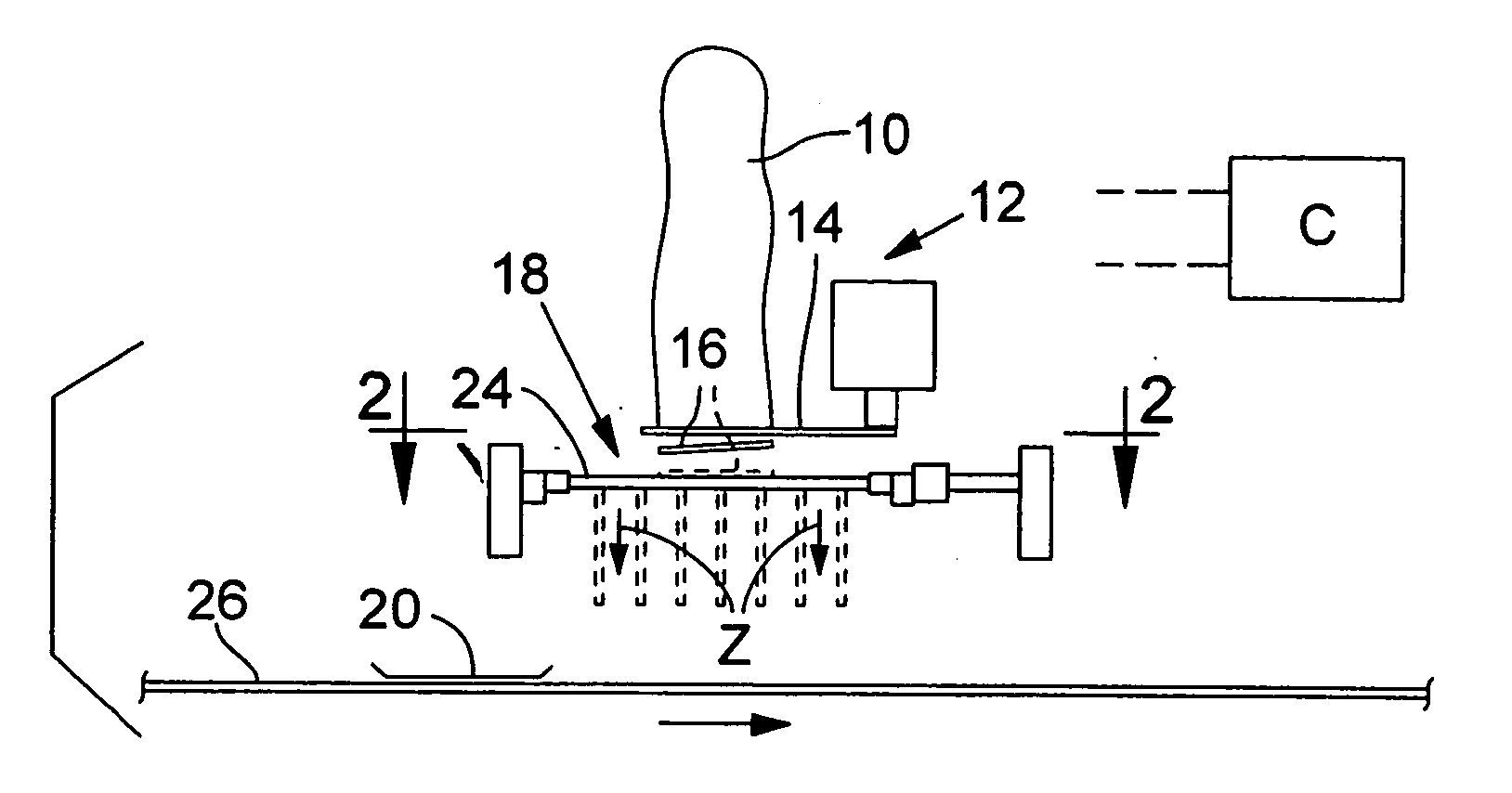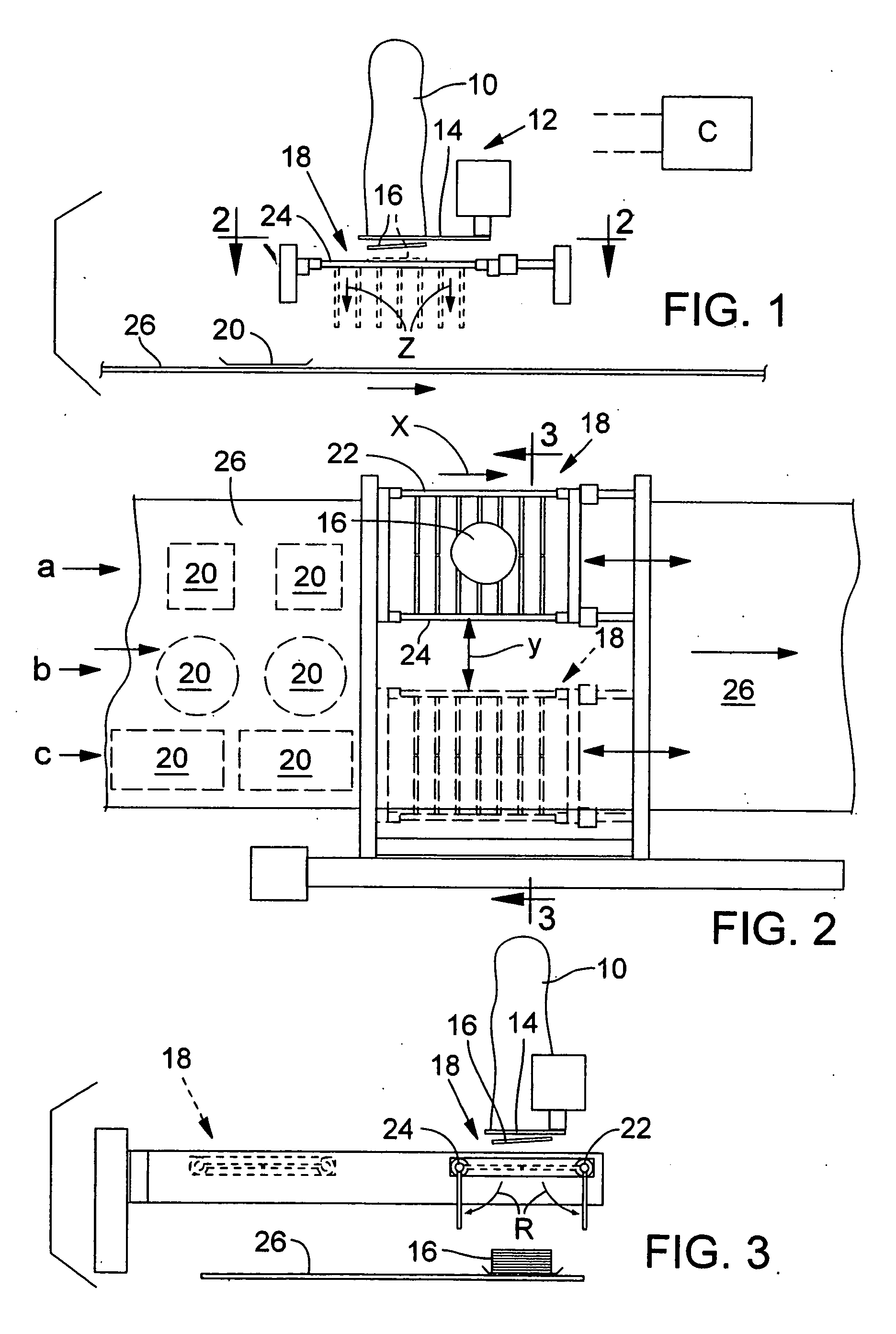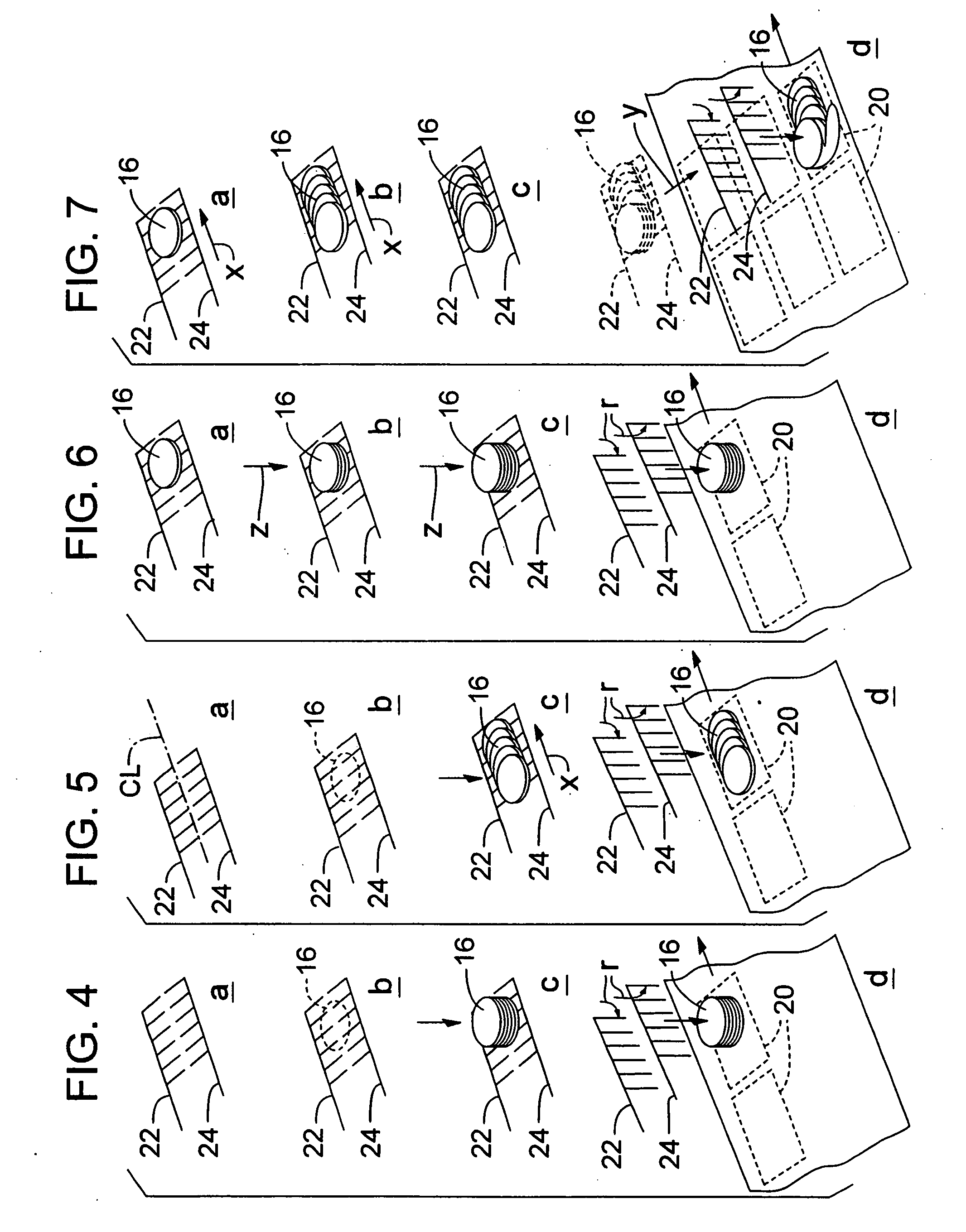Food portioning and application system
- Summary
- Abstract
- Description
- Claims
- Application Information
AI Technical Summary
Benefits of technology
Problems solved by technology
Method used
Image
Examples
Embodiment Construction
[0017] Reference is first made to FIGS. 1-3. In FIG. 1 a meat log or log is indicated as reference no. 10. A slicing machine 12 includes a pivoting or rotating blade 14 that slices through the log 10 to produce slices 16.
[0018] The slicing machine described is known and will not be illustrated or described in further detail. In a preferred embodiment, the log is gripped at opposed sides by feed conveyors and incrementally fed downward into the path of the blade 14. That is, the log is advanced downward by the desired thickness of a slice, the blade 14 is activated to cut through the log and thereby produce the slice 16 and that process is repeated over and over. Whereas, the schematic illustration of the log indicates that the log is advanced in the vertical direction and the blade pivoted through the log horizontally, it is common for the log to be in an angled position and the blade path angled accordingly. Either set up or arrangement will suffice for this application, but the v...
PUM
| Property | Measurement | Unit |
|---|---|---|
| Thickness | aaaaa | aaaaa |
| Gravity | aaaaa | aaaaa |
Abstract
Description
Claims
Application Information
 Login to View More
Login to View More - R&D
- Intellectual Property
- Life Sciences
- Materials
- Tech Scout
- Unparalleled Data Quality
- Higher Quality Content
- 60% Fewer Hallucinations
Browse by: Latest US Patents, China's latest patents, Technical Efficacy Thesaurus, Application Domain, Technology Topic, Popular Technical Reports.
© 2025 PatSnap. All rights reserved.Legal|Privacy policy|Modern Slavery Act Transparency Statement|Sitemap|About US| Contact US: help@patsnap.com



